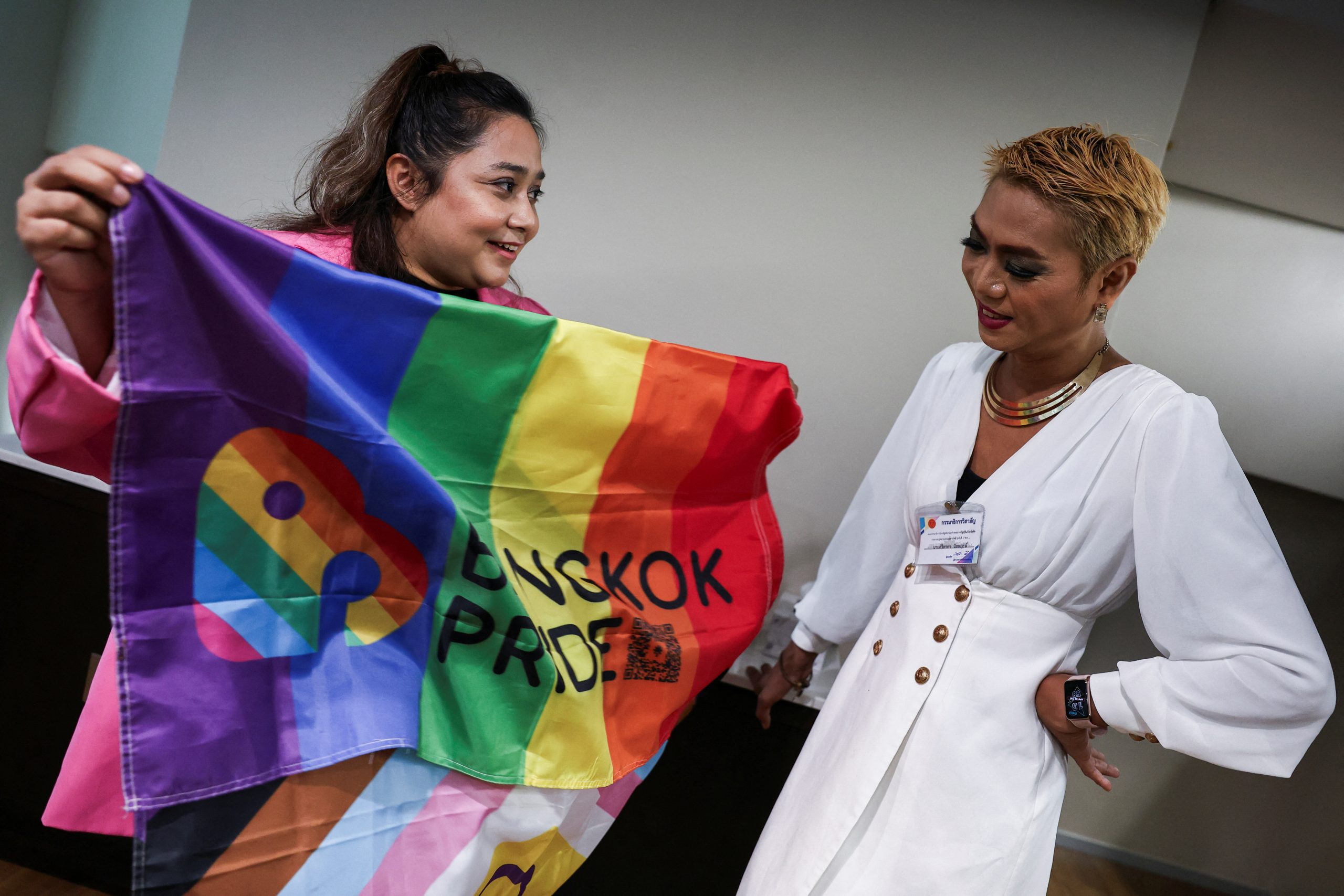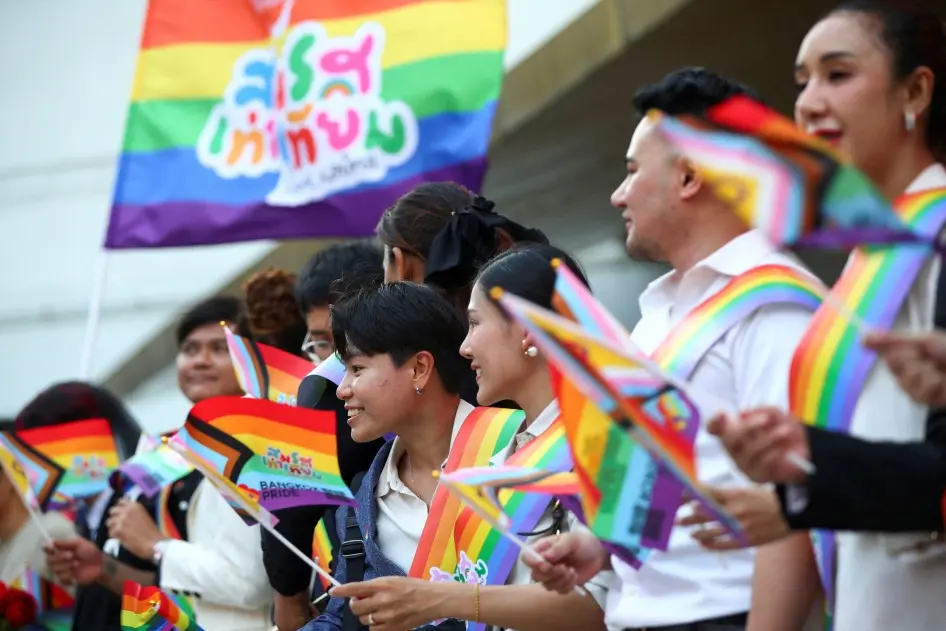Legal
What Can We Expect from Thailand in 2030?

(CTN News) – Thailand, known for its rich cultural heritage, breathtaking landscapes, and vibrant cities, has been on a transformative journey in recent years. As we look ahead to 2030, this article explores the potential advancements and changes that Thailand might undergo.
From economic growth and technological innovations to healthcare improvements and sustainable development, let’s delve into what the future holds for the Land of Smiles.
1. Thailand’s Economic Growth
Thailand’s economy is expected to continue its upward trajectory, becoming a key player in Southeast Asia. Factors such as increased foreign investment, a diverse industrial base, and a skilled workforce contribute to sustained economic growth. With a focus on diversification, Thailand aims to reduce its reliance on traditional industries and tap into emerging markets. This diversification will make the country more resilient to economic fluctuations.
2. Technological Advancements
With a growing emphasis on technology and innovation, Thailand is likely to make significant strides in areas like artificial intelligence, biotechnology, and renewable energy. These advancements will propel the nation into the digital age. The government is actively promoting research and development, encouraging startups, and fostering a culture of innovation. As a result, Thailand will become a hub for cutting-edge technologies and a magnet for tech-savvy entrepreneurs.
3. Tourism Industry

Thailand’s tourism industry will remain a global attraction. The country’s iconic destinations, warm hospitality, and diversified tourism offerings will continue to draw millions of visitors each year. Moreover, the tourism sector is working towards sustainability by promoting eco-tourism, preserving cultural sites, and reducing the environmental footprint of travel. This dual focus on tourism and sustainability ensures a bright future for the industry.
4. Sustainable Development Initiatives
In line with global trends, Thailand is committed to sustainable development. Initiatives to combat climate change, protect its natural resources, and promote eco-friendly practices will be at the forefront. Thailand has set ambitious targets for reducing carbon emissions, expanding renewable energy sources, and conserving its unique ecosystems. This commitment to sustainability not only safeguards the environment but also creates new business opportunities in green industries.
5. Healthcare Improvements
Thailand’s healthcare sector is set to become more advanced, offering world-class medical services. Medical tourism will thrive, and the well-being of both locals and visitors will be a top priority. The government is investing in state-of-the-art medical facilities, research, and training for healthcare professionals. This will not only boost the country’s healthcare reputation but also contribute significantly to its economy.
6. Education Sector Transformation
The education sector will see a transformation, with a focus on producing a skilled and innovative workforce. Partnerships with international institutions will enhance the quality of education. Thailand is investing in modernizing its education system, promoting STEM (Science, Technology, Engineering, and Mathematics) fields, and fostering creativity and critical thinking. This overhaul will prepare the workforce for the challenges of the 21st century.
7. Infrastructure Development
Massive infrastructure projects, including transportation networks and smart cities, will redefine urban living in Thailand, making it more connected and efficient. The government is committed to improving transportation infrastructure, including high-speed railways, airports, and modern urban planning. These efforts will reduce congestion, boost accessibility, and make Thailand’s cities more liveable.
8. Political Stability

High school students salute with three-fingers, symbol of resistance during a protest rally in Bangkok, Thailand, Saturday, Sept. 5, 2020. The student’s demonstration comes at a time of mass anti-government protests led predominantly by university students, putting added strain on the under-pressure administration of Prime Minister Prayuth Chan-ocha. (AP Photo/Gemunu Amarasinghe)
Thailand will strive for political stability, ensuring a peaceful environment for economic growth and social development. The government is working towards creating a stable political environment through constructive dialogue, transparent governance, and the protection of democratic institutions. Political stability is crucial for attracting foreign investments and fostering social harmony.
9. Cultural Preservation
Efforts to preserve and celebrate Thailand’s unique cultural heritage will continue, promoting traditions and local art forms. Thailand values its cultural heritage and is dedicated to preserving it. This includes supporting traditional arts, cultural festivals, and the conservation of historic sites. These efforts ensure that the country’s rich cultural tapestry remains vibrant in the modern era.
10. Environmental Conservation
Environmental conservation will be a top priority, with measures to protect Thailand’s natural beauty, such as its forests, wildlife, and marine ecosystems. Thailand’s commitment to preserving the environment includes forest restoration projects, wildlife conservation efforts, and marine ecosystem protection. The government is determined to safeguard its natural resources for future generations.
11. Foreign Relations
Thailand’s role on the global stage will strengthen, with active participation in international diplomacy and trade agreements. Thailand is keen on playing a more prominent role in regional and international affairs. This includes fostering trade relationships, participating in international organizations, and contributing to peacekeeping missions. Enhanced foreign relations will open up new opportunities for the country.
12. Emerging Industries
New industries, such as renewable energy, biotechnology, and digital marketing, will emerge as key sectors in Thailand’s economy. Thailand is diversifying its industrial base by promoting emerging sectors. This includes investment in renewable energy projects, biotechnology research, and developing a thriving digital marketing ecosystem. These emerging industries will drive economic growth and job creation.
13. Challenges and Opportunities
While Thailand faces challenges like income inequality and environmental degradation, it also presents numerous opportunities for growth and development. These challenges are being addressed through comprehensive policies, while opportunities are being seized to create a more prosperous and equitable society.
14. Conclusion
In summary, Thailand in 2030 is poised to be a nation that balances tradition and modernity, focusing on sustainable development, economic prosperity, and global engagement. As Thailand continues to evolve, it remains a land of opportunity and wonder.
15. FAQs
Q1. Will tourism still be a significant contributor to Thailand’s economy in 2030?
Yes, tourism is expected to remain a vital part of Thailand’s economy, offering unique experiences to travelers. Sustainable practices will ensure its longevity.
Q2. What steps is Thailand taking to combat climate change?
Thailand is actively involved in sustainability initiatives, emphasizing renewable energy and eco-friendly practices, aligning with global efforts to combat climate change.
Q3. How is Thailand planning to improve its healthcare system?
Thailand aims to enhance its healthcare infrastructure and services, attracting medical tourists and benefiting its citizens by investing in state-of-the-art healthcare facilities.
Q4. What challenges does Thailand face in achieving political stability?
Political stability in Thailand involves addressing diverse political interests and ensuring equitable governance. Efforts are underway to strengthen democratic institutions.
Q5. How is Thailand planning to preserve its cultural heritage in the modern era?
Thailand is dedicated to preserving its culture through heritage programs, festivals, and museums, ensuring that its rich cultural tapestry remains vibrant in the modern era.

Legal
Thai Court Amends Law to Allows Wives to Sue Husband’s Lovers

Thailand’s Constitutional Court has changed the Civil Code will allow women to sue their husbands’ lovers, male or female. The Constitutional Court found on Tuesday that Section 1523 of the Civil Code breached Section 27 of the constitution, which safeguards Thais’ rights and liberties regardless of gender.
The court directed that the verdict be enforced within 360 days.
Section 1523 of the Civil Code states that husbands can sue their wives’ lovers, and wives can sue other women who publicly display an adulterous connection with their husband.
Keirov Kritteeranon, secretary-general of the Office of the Ombudsman, stated that the Ombudsman had previously urged the court to rule on the legality of Section 1523, which allowed wives to suit only female lovers.
Husbands can now sue their wives’ boyfriends regardless of gender, and there was no requirement for any public declaration of an adulterous connection, he claimed.
Once enforced, Tuesday’s Constitutional Court order, according to the Ombudsman, will correct this imbalance.
Thailand Amends Marriage Law
Meanwhile, Thailand is set to become the first Southeast Asian country to recognise same-sex marriage, after its marriage equality law was passed in the Upper House on Tuesday and is now on its approach to being promulgated before going into effect in the coming months.
LGBTQ+ advocates rejoiced as the Senate voted 130-4 to pass the bill on its final reading, with 18 abstentions. They hailed the development as a win in their long struggle for equal rights.
When the advocates who had gathered at parliament on Tuesday to witness the Senate’s final reading and vote on the measure heard the outcome, they burst out in cheers.
They next went to authorities House, where the authorities had planned a celebratory reception for them later in the day. They then went to the Bangkok Art and Culture Centre, where the party lasted until late at night.
Prime Minister Srettha Thavisin, who is on sick leave due to Covid-19, congratulated them via Zoom call from Government House.
The new law will allow any two people aged 18 or older to register their marriage and obtain the same advantages and rights as heterosexual couples. The bill refers to married couples as “two individuals” rather than “a man and a woman,” and changes their legal status from “husband and wife” to “spouses.”
LGBTQ+ people from any country can legally marry in Thailand. When the bill goes into force, foreign same-sex married partners will be eligible for a spousal visa.
The law will be sent to the government for approval before being presented to the monarch.
It will take effect within 120 days of its publication in the Royal Gazette, making Thailand the third Asian country to accept same-sex marriages after Nepal and Taiwan.
Senator Kamnoon Sidhisamarn, spokesman for the Senate’s special committee evaluating the proposed law, called it a victory for equal rights campaigners.
“There is no reason for the Upper House to disagree with the judgement made by the House of Representatives,” he told reporters. He was referring to the legislation’s passage in the Lower House prior to its submission to the Senate for approval.
The battle for same-sex marriage legislation began 23 years ago. Tunyawaj Kamolwongwat, a Move Forward Party list-MP, said that the law’s passage on Tuesday signified the beginning of a new chapter in Thai history.
Source: Bangkok Post
Court Upholds Israel’s Ban on News Agency Al Jazeera
Legal
Thailand’s Senate Passes Landmark Marriage Equity Bill Legalizing Gay Marriage

Thailand’s Senate has approved a long awaited marriage equality bill on Tuesday, making the country the third Asian country to accept same-sex couples. The Senate approved the law 130-4 with 18 abstentions.
The marriage equality bill will be sent the palace for royal clearance. The marriage equality law takes 120 days to take effect after Royal Gazette publication.
LGBTQ+ advocates welcomed the proposal a “monumental step forward” because Thailand would be the first Southeast Asian country to legalise marriage equality. Thailand is popular with travellers due to its LGBTQ+ culture and tolerance.
“This would underscore Thailand’s leadership in the region in promoting human rights and gender equality,” the Civil Society Commission of marriage equality, activists, and LGBTI+ couples said.
Prime Minister Srettha Thavisin, who wore a rainbow shirt to commemorate Pride Month, joined thousands of LGBTQ+ revellers and activists in a Bangkok parade at the start of June.
The prime minister will open Government House to commemorate the bill’s passage. Pride supporters will march from Parliament to the prime minister’s office. Mr. Srettha, who has Covid-19, will join them online after taking several days off.
Deputy Prime Minister and Commerce Minister Phumtham Wechayachai anticipates June’s Pride Month to create approximately 4.5 billion baht in economic cash flow.

Pride Month in Thailand
On Saturday, Mr. Phumtham said the government under Prime Minister Srettha Thavisin is encouraging sexual diversity and working with the commercial sector to plan more Pride Month festivities to attract LGBTQ+ tourists.
He claimed it will increase the country’s trade potential by giving SMEs business expansion chances and adding soft power value.
Mr. Phumtham claimed Poonpong Naiyanapakorn, director-general of the Trade Policy and Strategy Office, told him Pride Month celebrations will make Thailand a “pride-friendly destination” for LGBTQ+ Thai and global consumers.
This would help the country become a regional tourism hub under the government’s “Ignite Tourism Thailand” initiative to enhance tourism in 55 “worth visiting” provinces.
He added that such festivals will support downstream industries like event planners, food and beverage companies, hotels, and transport services and disperse cash to local areas. Mr. Phumtham stated Thailand’s Pride Month began in 1999. Bangkok, Chiang Mai, Phuket, and Chon Buri host parades, festivities, and campaigns.
The Tourism Authority of Thailand (TAT) expects approximately 860,000 people to attend this year’s festival and contribute at least 4.5 billion baht for the economy. LGBT Capital estimates that the world’s LGBTQ+ population has US$4.7 trillion in purchasing power and Thailand’s sexually varied population has US$26 billion.
LGBTQ+ rights in Thailand are improving, but there’s still much to do. The LGBTQ+ community in Thailand is notably strong in Bangkok and Pattaya.
Strong legal recognition allows transgender people to change their names and titles. Many LGBTQ+ couples lack legal rights since same-sex marriage is banned.

LGBTQ+ rights in Thailand
Thailand is becoming more accepting despite these difficulties. LGBTQ+ rights are gaining favour. Activists want legal changes to guarantee equality.
Pride parades are becoming increasingly visible, demonstrating diverse acceptance. While challenges remain, LGBTQ+ rights in Thailand are improving as awareness and acceptance expand.
Legal
Protecting Your Designs: Intellectual Property Rights in the Jewelry Manufacturing Industry

The jewelry manufacturing industry is a vibrant and highly competitive sector where creativity and innovation are paramount. Designers invest significant time, effort, and resources into crafting unique pieces that appeal to consumers’ tastes and preferences. However, this industry faces a persistent challenge: the protection of original designs from imitation and unauthorized use.
Intellectual property rights (IPR) play a crucial role in safeguarding jewellery designs, ensuring that creators receive recognition and financial benefits from their work. This article delves into the various forms of intellectual property rights pertinent to the jewelry manufacturing industry and offers insights on how designers can protect their creations.
Understanding Intellectual Property Rights
Intellectual property rights are legal mechanisms that grant creators exclusive rights to their inventions, designs, and artistic works. These rights encourage innovation by providing creators with the means to control the use of their creations and to benefit financially from them. In the context of jewelry design, the most relevant forms of IPR are copyrights, trademarks, patents, and design rights.
Copyrights
Copyright protection extends to original works of authorship, including artistic creations such as jewelry designs. Under copyright law, the designer of a piece of jewelry automatically acquires the exclusive right to reproduce, distribute, and display the design upon its creation. This protection does not require registration, although registering the copyright with the appropriate governmental body, such as the U.S. Copyright Office, can provide additional legal benefits and evidence of ownership.
For jewelry designers, copyright protects the aesthetic aspects of a piece, such as the specific design, patterns, and artistic expressions. However, it does not cover the functional elements or the materials used. The duration of copyright protection varies by country, but it typically lasts for the life of the creator plus an additional 50 to 70 years.
Trademarks
Trademarks protect symbols, names, logos, and slogans that distinguish goods and services in the marketplace. For jewelry manufacturers, a trademark can cover the brand name, logo, or even a unique product line name.
Registering a trademark with the appropriate authority, such as the United States Patent and Trademark Office (USPTO), provides nationwide protection and the exclusive right to use the mark in connection with the specified goods or services.
A strong trademark helps consumers identify and differentiate a brand’s products from those of competitors, fostering brand loyalty and reducing the risk of confusion in the marketplace. It also provides legal recourse against counterfeiting and unauthorised use of the brand’s identity.
Patents
Patents protect new inventions and technical innovations. In the jewelry industry, this could include innovative manufacturing processes, unique mechanisms for adjustable or interchangeable jewelry, or novel materials and techniques. A patent grants the inventor the exclusive right to use, make, and sell the invention for a limited period, usually 20 years from the filing date of the patent application.
Obtaining a patent involves a rigorous process of proving that the invention is novel, non-obvious, and useful. For jewelry designers, the primary benefit of patent protection lies in safeguarding their innovative techniques and mechanical features, which can provide a competitive edge in the market.
Design Rights
Design rights specifically protect the visual appearance of a product, including its shape, configuration, pattern, and ornamentation. These rights are particularly relevant to the jewelry industry, where the aesthetic appeal of a product is a key selling point. In many jurisdictions, design rights must be registered to be enforceable, though some countries offer unregistered design rights that provide limited protection.
Registering a design right involves submitting detailed representations of the design to the relevant authority, such as the European Union Intellectual Property Office (EUIPO) for protection within the EU. Registered design rights typically offer protection for up to 25 years, subject to renewal fees.
Steps to Protect Jewelry Designs
- Document Your Designs: Maintain detailed records of your design process, including sketches, prototypes, and finished pieces. This documentation can serve as evidence of originality and ownership in case of disputes.
- Conduct Searches: Before launching a new design, conduct thorough searches to ensure it does not infringe on existing intellectual property. This can prevent legal issues and costly disputes.
- Register Your IP: Where applicable, register your copyrights, trademarks, patents, and design rights with the appropriate authorities. Registration enhances protection and provides legal advantages in enforcing your rights.
- Use NDAs and Contracts: When working with manufacturers, suppliers, and collaborators, use non-disclosure agreements (NDAs) and detailed contracts to protect your designs and outline the terms of use. ( Check out EJ: A Jewelry Manufacturer with NDA’s.
- Monitor the Market: Regularly monitor the market for potential infringements. This can involve online searches, attending trade shows, and staying informed about competitors’ activities.
- Take Legal Action if Necessary: If you discover an infringement, take prompt legal action to enforce your rights. This may involve sending cease-and-desist letters, pursuing litigation, or seeking alternative dispute resolution methods.
Challenges and Considerations
While intellectual property rights offer significant protection, there are challenges and limitations to consider. The cost and complexity of obtaining and enforcing IPR can be prohibitive, especially for small designers and startups. Additionally, the global nature of the jewelry market means that protections obtained in one jurisdiction may not be recognized elsewhere, necessitating international strategies for comprehensive protection.
Moreover, the fast-paced nature of fashion and jewelry trends can make lengthy registration processes impractical for certain designs. In such cases, relying on unregistered design rights or focusing on brand protection through trademarks may be more viable strategies.
Conclusion
Intellectual property rights are a vital tool for protecting the creativity and innovation that drive the jewelry manufacturing industry. By understanding and strategically utilizing copyrights, trademarks, patents, and design rights, designers can safeguard their creations, enhance their competitive edge, and ensure they reap the financial rewards of their ingenuity. As the industry continues to evolve, staying informed about IPR and adapting to emerging challenges will be crucial for sustaining success in the dynamic world of jewelry design.
People Also Reading:
Law Firm Chastised for Using OpenAI ChatGPT for Legal Research
Law Firm Chastised for Using OpenAI ChatGPT for Legal Research
-

 News3 years ago
News3 years agoLet’s Know About Ultra High Net Worth Individual
-
Entertainment2 years ago
Mabelle Prior: The Voice of Hope, Resilience, and Diversity Inspiring Generations
-

 Health3 years ago
Health3 years agoHow Much Ivermectin Should You Take?
-

 Tech2 years ago
Tech2 years agoTop Forex Brokers of 2023: Reviews and Analysis for Successful Trading
-

 Lifestyles3 years ago
Lifestyles3 years agoAries Soulmate Signs
-

 Movies2 years ago
Movies2 years agoWhat Should I Do If Disney Plus Keeps Logging Me Out of TV?
-

 Health3 years ago
Health3 years agoCan I Buy Ivermectin Without A Prescription in the USA?
-

 Learning2 years ago
Learning2 years agoVirtual Numbers: What Are They For?